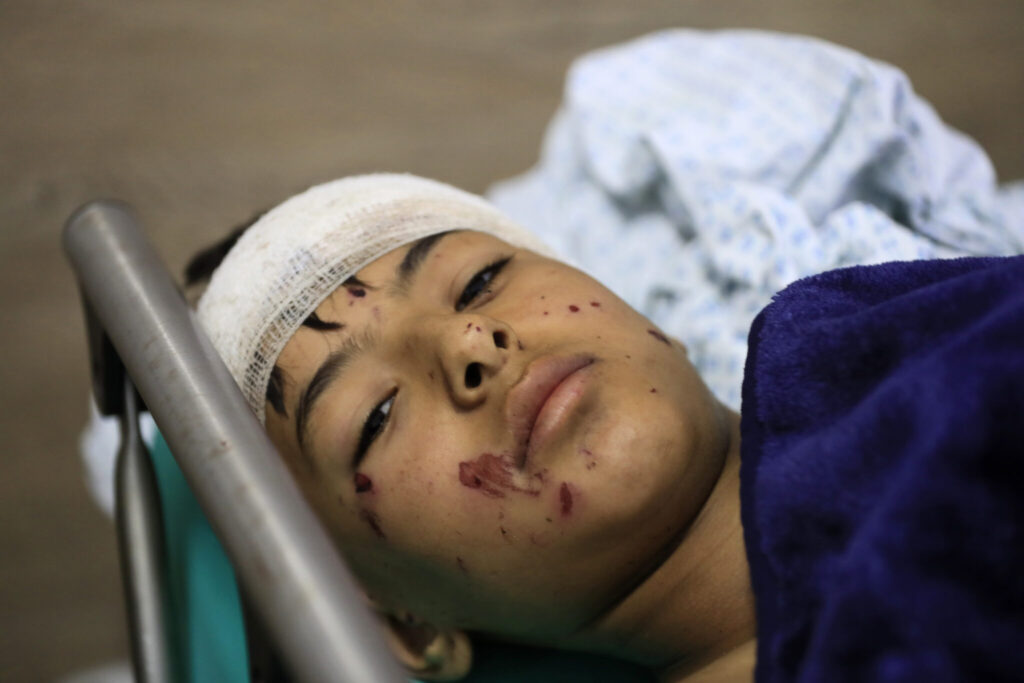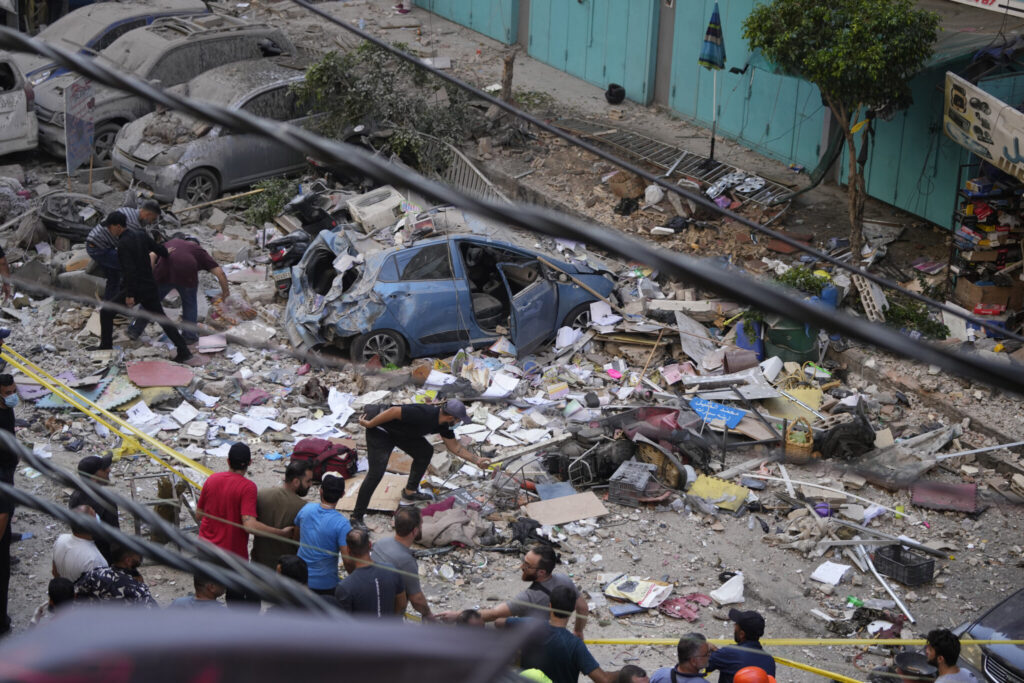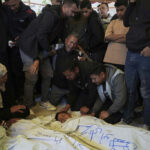Hezbollah commander killed by Israel/ Israeli strike targets Hezbollah/ Ibrahim Kobeisi killed in airstrike/ Newslooks/ BEIRUT/ LEBANON/ J. Mansour/ Morning Edition/ Israel announced it killed Ibrahim Kobeisi, a senior Hezbollah commander responsible for missile and rocket launches, in an airstrike on Beirut. As tensions escalate, Hezbollah retaliated by launching rockets into northern Israel, while thousands of civilians fled southern Lebanon. The death toll from recent Israeli bombardments in Lebanon has risen to nearly 560.

Israeli Strike on Hezbollah Commander Quick Look:
- Israeli forces killed Hezbollah’s top missile and rocket commander, Ibrahim Kobeisi, in a strike on Beirut.
- The death toll from Israeli airstrikes in Lebanon has reached nearly 560.
- Hezbollah launched dozens of rockets into northern Israel, causing widespread damage.
- Thousands of civilians have fled southern Lebanon as both sides edge closer to all-out war.
Israel Kills Hezbollah Commander Amid Rising Tensions in Lebanon
Deep Look:
In a significant escalation of the ongoing conflict, Israeli military forces announced on Tuesday that they killed Ibrahim Kobeisi, a top Hezbollah commander in charge of the militant group’s missile and rocket operations. Kobeisi was targeted in a precision airstrike on Beirut, along with several other Hezbollah figures. The Israeli military did not confirm if any of the other commanders were killed or injured in the attack.
This strike comes amid a sharp increase in hostilities between Israel and Hezbollah, with both sides engaging in heavy cross-border exchanges. Hezbollah retaliated to the Israeli strike by launching a series of missiles and rockets into northern Israel. Israeli officials reported that 55 rockets were fired from Lebanon, sparking fires and causing damage to buildings. Two civilians were treated for injuries after rockets fell near their car, and others were hurt in accidents as they rushed to shelters.
Escalating Violence and Civilian Displacement The conflict has forced thousands of Lebanese civilians to flee southern Lebanon, particularly after the Israeli military issued warnings for people to evacuate areas suspected of harboring Hezbollah weaponry. Many displaced families have sought refuge in Beirut and the coastal city of Sidon, with shelters quickly filling to capacity. Those who couldn’t secure shelter slept in their cars or in parks, while volunteers have stepped in to provide food and essential supplies.
Issa Baydoun, a resident of the southern village of Shihine, recounted how he and his family fled under heavy bombardment, traveling in a convoy of cars to Beirut. “We evacuated our homes because Israel is targeting civilians and attacking them,” Baydoun said, disputing Israel’s claim that it only strikes military targets.
Mounting Death Toll The ongoing Israeli bombardment has taken a heavy toll on Lebanon, with the country’s Health Ministry reporting that at least 558 people have been killed since Monday, including 50 children and 94 women. The strikes have also left over 1,800 people wounded. The recent surge in violence marks the highest single-day death toll in Lebanon since the 2006 war between Israel and Hezbollah.
Satellite Data and Expanding Strike Zones Data from American fire-tracking satellites analyzed by the Associated Press revealed the extensive nature of Israel’s airstrikes, which have targeted more than 1,700 square kilometers (650 square miles) of southern Lebanon. The satellite data, typically used for tracking wildfires, captured flashes and fires ignited by Israeli airstrikes, particularly in areas where Hezbollah is suspected of storing weapons.
Several intense fires were recorded near Naqoura, a coastal town that hosts the United Nations Interim Force in Lebanon (UNIFIL). Other fires were seen in rural and mountainous areas, underscoring the wide geographic range of the Israeli bombardment.
Hezbollah’s Retaliation Hezbollah, widely regarded as one of the most formidable paramilitary groups in the Arab world, responded with significant force, launching missiles and drones into northern Israel. The Israeli military reported that Hezbollah had fired some 9,000 rockets into Israeli territory since October 2023, with 250 launched on Monday alone. While Israeli forces have been primarily focused on countering Hezbollah’s missile launches, the military is prepared for a potential ground invasion should the conflict intensify.
Hezbollah’s latest strikes targeted an explosives factory in Zichron Yaakov, approximately 60 kilometers from the Israel-Lebanon border. The Israeli military responded with multiple airstrikes on Hezbollah positions, including the cell responsible for overnight rocket fire.
The Humanitarian Crisis As violence escalates, Lebanon faces an increasing humanitarian crisis. The United Nations High Commissioner for Refugees (UNHCR) reported that several of its staff members were killed in the ongoing conflict, including a staffer and her young son in the Bekaa region. Another UNHCR worker was killed in a strike in southern Lebanon, adding to the growing number of civilian casualties.
The Lebanese population, still grappling with the aftermath of the 2020 Beirut port explosion and economic turmoil, now faces widespread displacement and mounting casualties. The country’s infrastructure has also been severely impacted, with residents in cities like Baalbek rushing to stock up on food and fuel in anticipation of further strikes.
Outlook and Uncertainty With Hezbollah maintaining its stance of continued rocket fire until a cease-fire is reached in Gaza, and Israel’s vow to prevent Hezbollah from further targeting its citizens, the likelihood of de-escalation appears slim. Israeli officials have warned that Hezbollah’s arsenal includes approximately 150,000 rockets and missiles, many capable of striking deep within Israeli territory.
As the conflict continues to rage, the specter of a full-scale war looms over the region, threatening to draw in neighboring countries and further destabilize the Middle East.







